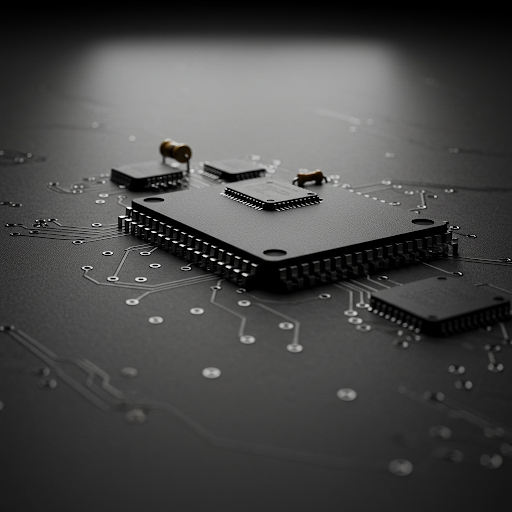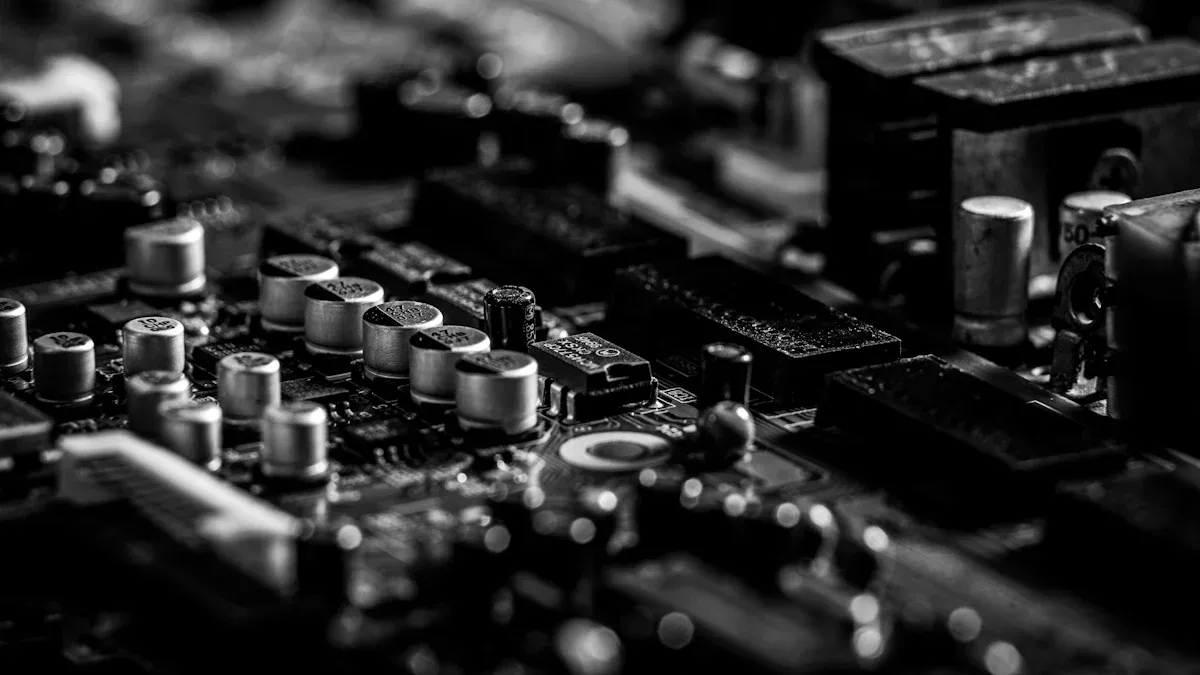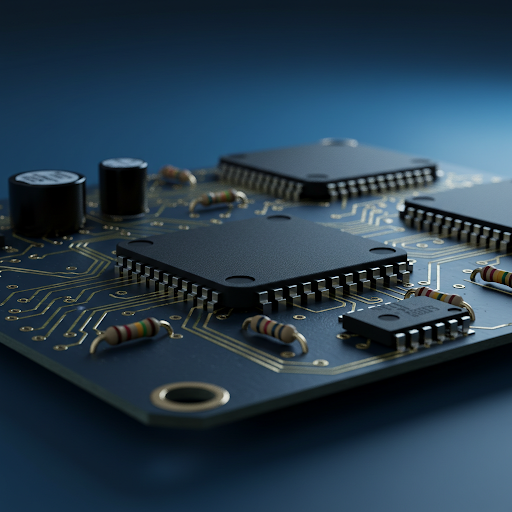
X-ray inspection for PCBA quality control is now very important. It helps find hidden problems to enhance the performance of electronics.
In 2023, the world PCB X-ray inspection for PCBA quality control service market was $1.2 billion.
By 2032, it might grow to $2.8 billion, rising 9.2% each year.
This demonstrates how crucial X-ray inspection for PCBA quality control is for advancing technology and ensuring quality.
Key Takeaways
X-ray checks help find hidden problems in tricky PCBs. This keeps them reliable for important fields like space and healthcare.
Buying X-ray machines can save money later. They stop expensive fixes and meet industry rules.
New tools like AI and robots improve X-ray checks. They make them quicker and better for today’s factories.
The Current State of PCBA Quality Control
Overview of Common Quality Control Methods
Quality control ensures printed circuit boards work well. Different methods check PCBs for problems. Automated optical inspection (AOI) is very popular. It uses cameras to find surface issues like bad soldering or missing parts. Thermography spots heat problems that may show bad connections. Acoustic microscopy uses sound waves to find cracks or gaps. X-ray inspection is great for finding hidden problems in complex boards.
A recent survey shows how inspection methods have changed in 25 years. New tools, like AI-powered systems, check many parts quickly. But there are still problems, like not enough PCB data and hard-to-check designs. The table below shows key points:
Key Findings | Description |
|---|---|
Changes in Inspection Methods | Improvements in tools, especially AI-based systems. |
Problems in PCBA Inspection | Harder checks due to complex designs and fast updates. |
New Advancements | Faster checks compared to older AOI tools. |
Data Issues | Few public datasets make studies harder to repeat. |
Future Needs | Better systems to handle changing designs in factories. |
Strengths and Weaknesses of AOI
AOI is fast and affordable for large production runs. It works well for finding surface problems. But AOI cannot see inside boards, so it’s not good for complex designs. The table below compares AOI and X-ray inspection:
Feature | AOI | X-Ray Inspection |
|---|---|---|
Speed | Very fast | Slower than AOI |
Cost | Cheaper for big batches | More expensive |
Problem Detection | Surface issues only | Finds hidden problems |
Best Use | Large-scale production | Complicated designs |
Critical Uses | Less important tasks | Needed for reliability |
Applications of Thermography in PCB Testing
Thermography checks PCBs without touching them. It uses heat cameras to find temperature changes. These changes can show problems like overheating parts or bad soldering. Thermography is great for high-power boards but cannot see inside. This makes it less useful for complicated designs.
Acoustic Microscopy and Its Limitations
Acoustic microscopy uses sound waves to check PCBs. It finds cracks, gaps, and layers coming apart. The sound wave frequency affects how well it works. Low frequencies go deeper but show less detail. High frequencies show more detail but don’t go deep. For example, frequencies over 400 MHz are good for surface checks but miss deeper problems. This limits its use for advanced boards.
Why X-ray Inspection Stands Out

Non-Destructive Testing Capabilities
X-ray inspection lets you check PCBs without harming them. This method keeps the PCB safe during testing. Unlike older ways that need touching or taking apart, X-ray inspection looks inside without changing anything.
This is very helpful for expensive or complex PCBs. You can find problems like cracks, voids, or misalignments without causing damage. It also lets you test many boards in one batch, ensuring all are high quality.
Tip: Use non-destructive testing for important tasks like medical or aerospace devices.
Internal Defect Detection in PCBAs
X-ray inspection finds hidden problems that other methods miss. While AOI checks surface issues, X-ray looks deeper into the PCB. It spots things like solder voids, cracks, or misplaced parts.
For example, multilayer PCBs can have issues between layers. These are invisible to surface checks but clear with X-ray. This helps ensure your PCBAs are reliable. Fixing these flaws is crucial for industries where small mistakes can cause big failures.
Using X-ray inspection improves quality control. It lowers the chance of bad products reaching customers. This boosts product reliability and keeps your company’s reputation strong in the market.
Versatility of PCB X-ray Inspection Systems
X-ray systems work for many types of PCBs. They handle simple or complex designs. These systems check parts like solder joints, capacitors, and circuits, ensuring everything works well.
As electronics grow, good inspection methods are more important. The PCB X-ray market may grow from $400 million in 2024 to $700 million by 2033, with a 7.0% yearly increase. The global PCB inspection market might hit $1.5 billion by 2025, growing 8.2% each year. This shows how much industries depend on X-ray systems.
As PCBs get more complex, X-ray systems stay essential for quality and reliability.
Challenges and Limitations of X-ray Inspection
Cost of X-ray Inspection Systems
X-ray inspection systems work well but are very expensive. Buying these systems can cost hundreds of thousands of dollars. This makes them hard to afford for small and medium businesses. Many companies use outside services instead of buying their own systems to save money.
Adding these systems to current production lines is also tricky. Customizing them can mess up workflows and raise costs. For businesses with limited budgets, these issues make using X-ray inspection a tough choice.
Challenge/Restraint | Description |
|---|---|
High Costs | Complex systems mean higher prices. |
Integration Complexity | Custom setups disrupt work and add costs. |
Speed and Efficiency Concerns
Modern factories work very fast, often over 90 meters per minute. X-ray systems must match this speed while staying accurate. Advanced software helps reduce mistakes and speeds up checks, but keeping this balance is still hard.
Dynamic analysis improves performance, but setup and changes take time. Differences in product density or random patterns can also slow inspections. These problems show the need for faster and more flexible systems.
Important performance features include:
Fast computers to find defects accurately.
Fewer false rejects with smart algorithms.
Ability to check different PCB designs and solder issues.
Comparison with Other Quality Control Methods
X-ray inspection is great for finding hidden problems and doesn’t damage PCBs. But it costs more and works slower than other methods.
Inspection Method | Advantages | Limitations |
|---|---|---|
Visual Inspection | Easy and cheap | Only finds surface issues, not precise |
Automated Optical Inspection | Fast and good for surface problems | Can’t find hidden defects |
X-ray Inspection | Finds hidden/internal issues, no damage | Costs more, needs special tools |
When picking a method, think about your budget, speed needs, and PCB design complexity. For important tasks, X-ray inspection is the most dependable choice.
Future Trends in X-ray Inspection for PCBA (2025 and Beyond)

AI and Machine Learning in X-ray Inspection
AI and machine learning are changing how we check circuit boards. These tools study complex data fast and find defects better. Big companies like GE and Nikon already use them to improve inspections.
AI systems can spot patterns and problems that older methods miss. This is very helpful for industries like aerospace and medical devices. Adding AI to pcb x-ray inspection reduces mistakes and improves quality checks.
Benefits of AI and machine learning:
Faster and better at finding defects.
Handles complex PCB designs easily.
Cuts down on human errors.
Note: AI systems are key for managing modern, complex PCBs.
Advancements in Imaging Technology
New imaging tools are improving pcb x-ray inspection. Flexible X-ray panels now bend to fit surfaces, making scans more accurate. Liquid nanocrystal imaging captures X-rays better than older methods, without using heavy metals.
Portable X-ray devices are also exciting. They make inspections easier and faster. Tomosynthesis, a 3D imaging method, shows detailed PCB views, helping find hidden issues.
Key imaging advancements:
Flexible panels for better scanning.
Portable devices for quick checks.
Smarter algorithms for clearer images.
These updates keep X-ray inspection ahead in PCB quality control.
Automation in PCB X-ray Inspection Systems
Automation is transforming pcb x-ray inspection. Automated X-ray Inspection (AXI) systems replace manual checks, saving time and money. They can inspect many boards at once, finding defects quickly for fast fixes.
AXI systems also boost production speed. They work well in fast factories while staying accurate. This makes them perfect for industries needing quick, high-quality results.
Features of AXI systems:
Faster checks with less human work.
Inspects multiple boards at the same time.
Finds defects instantly for quick solutions.
Using automation makes inspections faster and more efficient.
Industry Impact of Emerging X-ray Technologies
New X-ray tools are changing PCB manufacturing. They test boards without damage, showing internal parts clearly. 3D imaging gives a full view of connections and components.
These tools check tricky parts like Ball Grid Arrays (BGAs) and fine-pitch components. This ensures reliable products and fewer failures in important uses.
Feature | Description |
|---|---|
Non-destructive Testing | Checks inside PCBs without causing damage. |
Defect Detection | Finds hidden issues like cracks or solder voids. |
3D Visualization | Shows a full 3D view for detailed connection checks. |
As demand for better PCBs grows, these technologies will help meet industry needs.
When to Choose X-ray Inspection
When Precision and Reliability Matter Most
X-ray inspection is needed for precise and reliable results. Industries like aerospace, cars, and medical devices depend on it. Small mistakes in these areas can cause big problems. For example, X-rays find hidden solder issues in complex electronics, ensuring they work well.
In investigations, X-rays are very useful. They check damaged items or debris without changing them. This keeps fragile evidence safe for later study. X-rays also help find problems like cracks or gaps inside items. These features make X-ray inspection important for accurate and dependable tasks.
Uses in Complicated and Important PCB Designs
Complicated PCBs need special inspection tools. X-ray inspection finds problems early, saving money and time. It gives clear images to check inside PCBs carefully. This is key for multilayer PCBs, where hidden issues can cause failures.
Industries like medical devices and aerospace benefit a lot from X-rays. They ensure every part meets strict quality rules. By checking hidden solder joints and tiny parts, X-rays lower the chance of problems. This makes X-ray inspection essential for keeping complex PCBs reliable.
Weighing Costs and Benefits of X-ray Inspection
Buying X-ray systems costs a lot at first but saves money later. Finding problems early avoids redoing work or wasting materials. Advanced systems make work faster and cheaper over time.
X-rays also improve product quality, attracting more buyers. They help meet industry rules, avoiding fines. Training workers to use these systems well increases their value. Combining quality checks and cost savings makes X-ray inspection a smart business move.
X-ray inspection provides excellent accuracy for finding hidden issues in PCBAs. It is crucial for industries needing top-quality products.
Main Advantages:
Testing without causing damage.
Finding problems not visible outside.
Useful for advanced and tricky designs.
Use X-ray inspection for important tasks to boost quality and match today’s manufacturing needs.
FAQ
Why is X-ray inspection better than AOI?
X-ray finds hidden problems AOI cannot detect. It works well for tricky PCB designs. This makes it great for industries needing perfect results. 🛠️
Are X-ray systems too costly for small businesses?
X-ray machines cost a lot, but hiring services is cheaper. Small businesses can keep quality high without spending too much. 💡
How does X-ray inspection make products more reliable?
X-ray spots hidden flaws like cracks or solder gaps. Fixing these early helps products meet standards and work well in important jobs. ✅
See Also
Exploring Turnkey And Consignment PCBA Manufacturing Options 2025
Evaluating Top All-in-One PCBA Manufacturing Services 2025
Speeding Up PCBA Production While Maintaining Quality Standards
Ensuring Quality Control Throughout The Entire PCBA Manufacturing Process
Perfecting PCBA Manufacturing Methods For Superior Quality Outcomes




